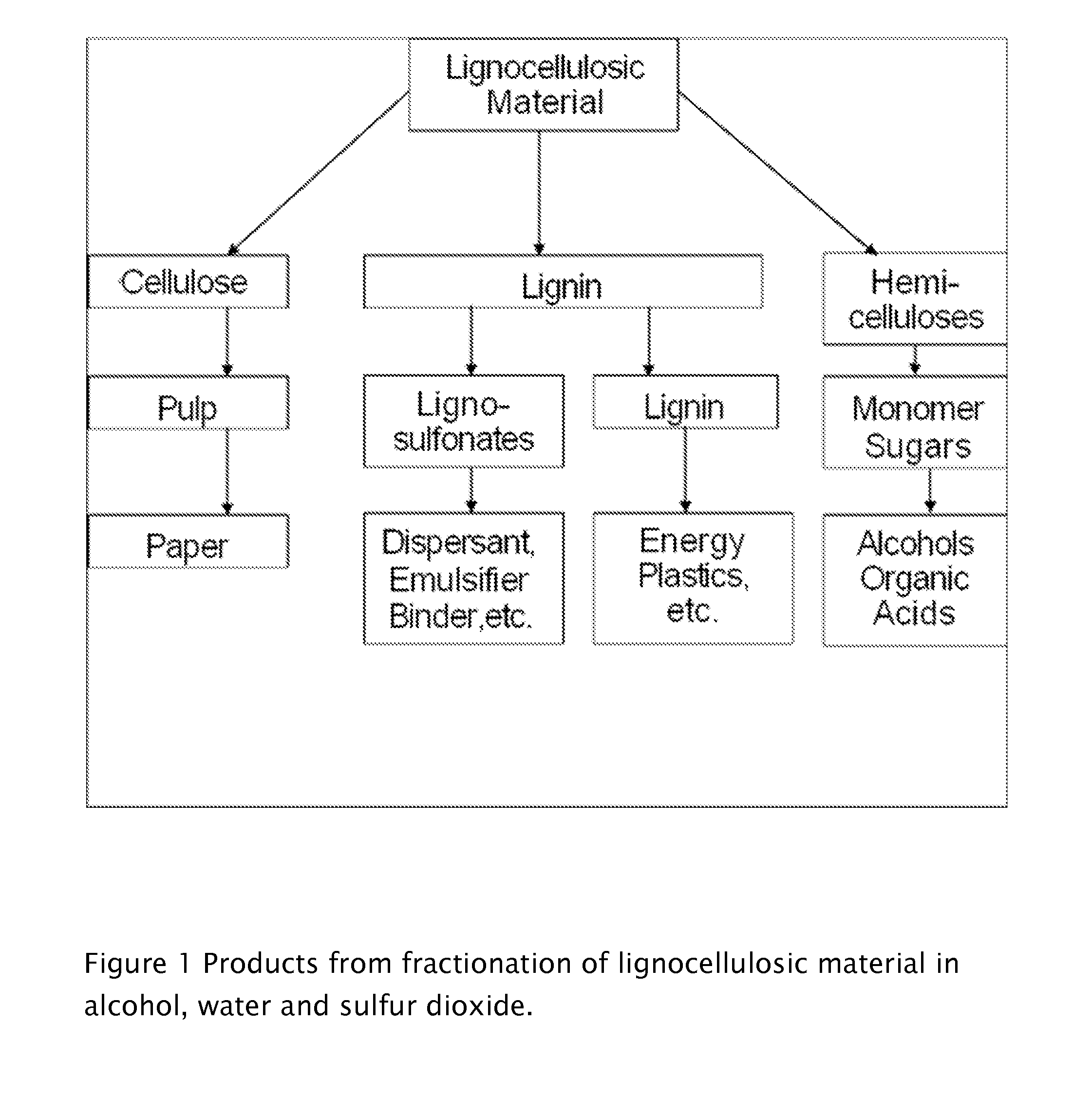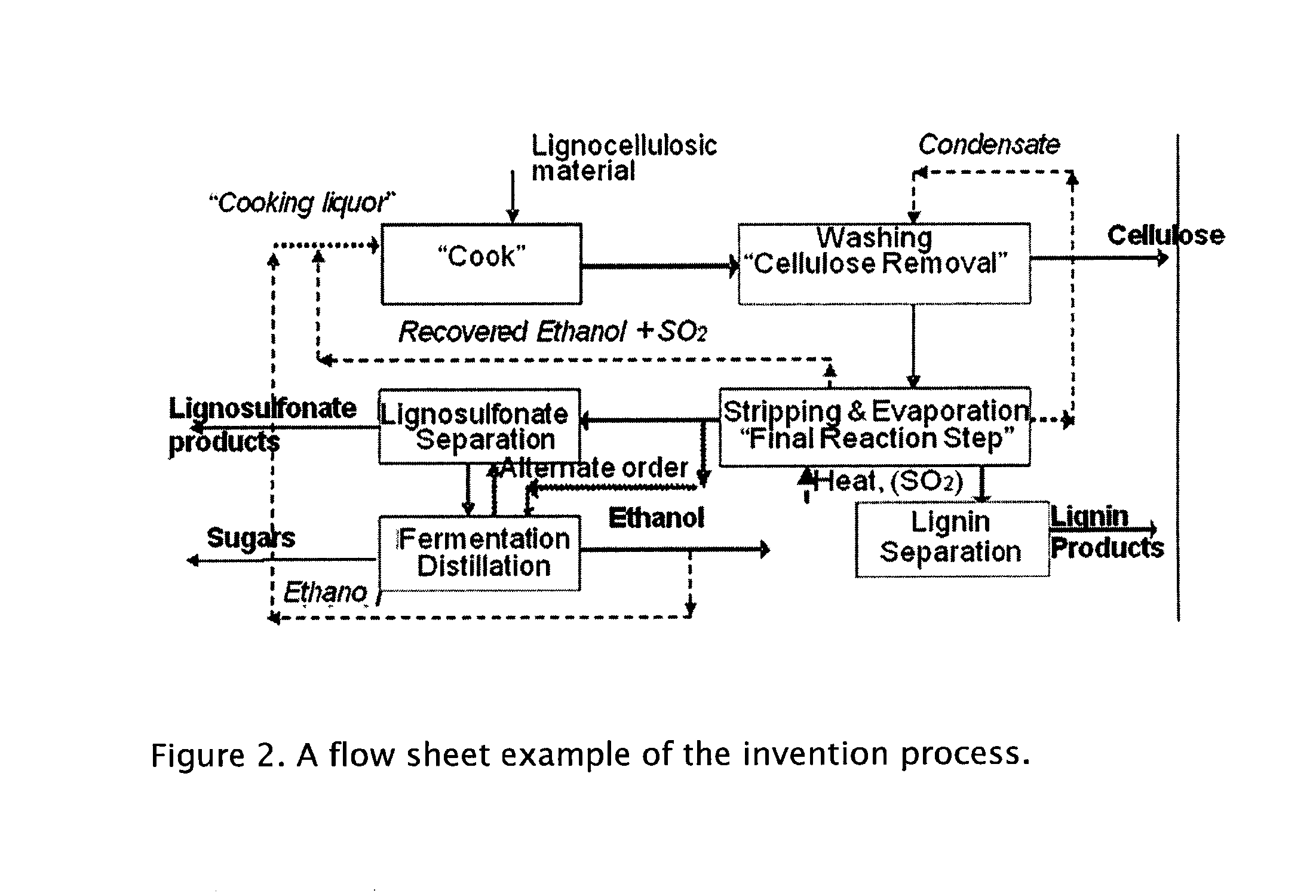Separation of Lignin From Hydrolyzate
a technology of hydrolyzate and lignin, which is applied in the direction of lignin derivatives, multi-stage pulping process, pulp liquor regeneration, etc., can solve the problems of significant pollution, limited use of lignin products, and reduced research of beneficial uses of lignin byproducts
- Summary
- Abstract
- Description
- Claims
- Application Information
AI Technical Summary
Problems solved by technology
Method used
Image
Examples
example 1
[0026]The following example illustrates the invention but in no way limits it:
[0027]Wood chips of mixed northern pine species, containing 39.7% moisture heated up and held were cooked for 10 minutes at 150° C. in a 2 liter Parr reactor. The moisture adjusted cooking liquor consisted of 15% SO2, 42.5% of ethanol and 42.5% water by weight in 6 parts of total liquor to 1 part of dry wood. Cellulose was removed and washed with water representing 47.8% of the original wood mass. The wash water was mixed and evaporated in a rotary vacuum evaporator at 85-90 degrees C. until liquor volume was half of the original and all the ethanol was evaporated. The resulting hydrolyzate, containing approximately 5% solids by weight, was put in the cold room (4° C.) centrifuged extensively in high speed centrifuge and the supernatant was removed.
[0028]The centrifuge precipitate was washed with pH 2.2 acid water and centrifuge again. washing and centrifuging was repeated for up to three times. Finally ai...
example 2
[0030]The following example illustrates the invention but in no way limits it:
[0031]Several batches of green southern pine wood chips were cooked in a lab digester with nominal capacity of 10 liter at or below 150° C. for less than one hour. The moisture adjusted cooking liquor consisted of 12-18% SO2 by weight dissolved in 50 / 50 of ethanol water mixture. The liquor volume was approximately 6 parts of total liquor to 1 part of dry wood. Cellulose was removed after pulping representing 45-50% of the original wood mass. The wash water was mixed and evaporated in a rotary vacuum evaporator at 45-90° C., until liquor volume the ethanol undetectable. The resulting hydrolyzate, containing approximately was cooled in the cold room (4° C.) to room. No settling of suspended solids was observed after several days. The liquor was subjected to three treatments.
[0032]First portion (01) of the liquor was adjusted to pH 1 using concentrated sulfuric acid. The liquor was heated to 120° C. for one h...
PUM
| Property | Measurement | Unit |
|---|---|---|
| Temperature | aaaaa | aaaaa |
| Temperature | aaaaa | aaaaa |
| Fraction | aaaaa | aaaaa |
Abstract
Description
Claims
Application Information
 Login to View More
Login to View More - R&D
- Intellectual Property
- Life Sciences
- Materials
- Tech Scout
- Unparalleled Data Quality
- Higher Quality Content
- 60% Fewer Hallucinations
Browse by: Latest US Patents, China's latest patents, Technical Efficacy Thesaurus, Application Domain, Technology Topic, Popular Technical Reports.
© 2025 PatSnap. All rights reserved.Legal|Privacy policy|Modern Slavery Act Transparency Statement|Sitemap|About US| Contact US: help@patsnap.com



